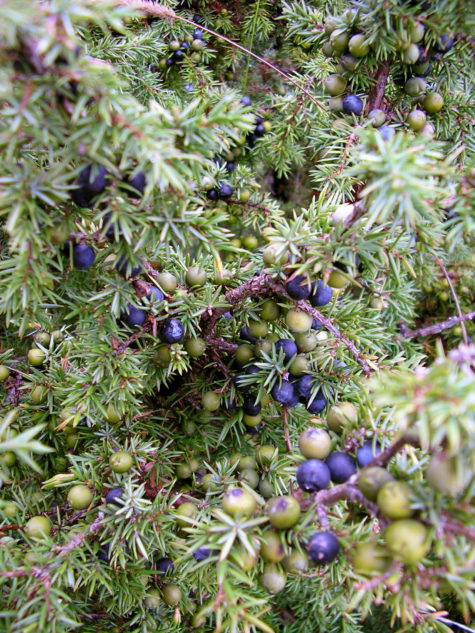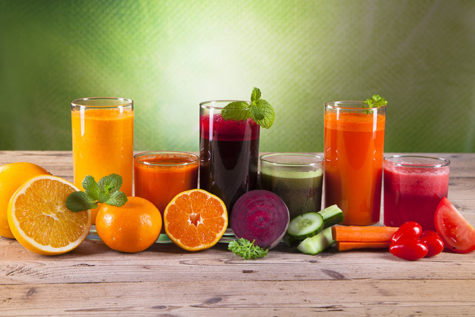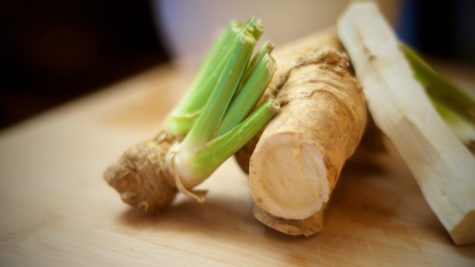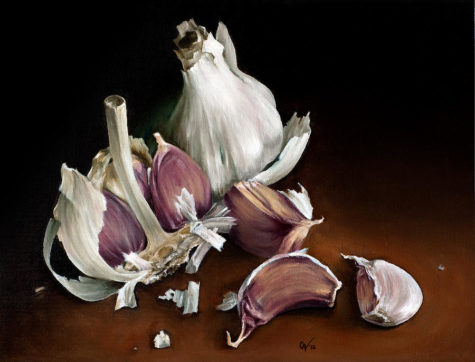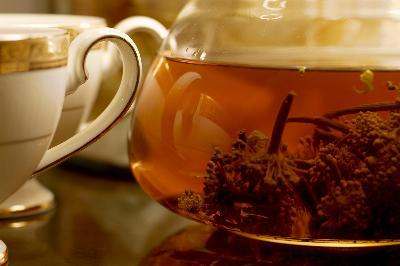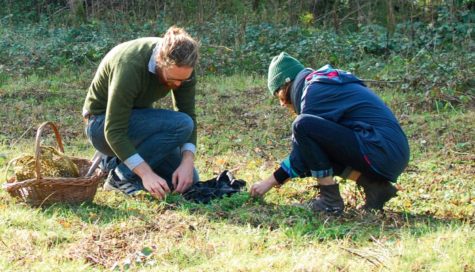Cures and Healing
Juniper For Protection
There are many legends and the bible stories connected with the juniper. In a biblical story, Elijah was saved from king Ahab by sheltering under a juniper tree. A Brother’s Grimm story about a Juniper tree can be found here. Romanies say that any animal who seeks sanctuary from the hunter will be safe under a juniper tree.
Make a tea from the berries to cure nerves and indigestion. Allow about a dozen crushed berries per person, pour over them one and a half pints of boiling water and allow to draw for seven or eight minutes. Strain, and sweeten with honey.
The gypsies know juniper berries to have disinfectant qualities which are beneficial to the whole system. They rub their gums with them to promote healthy mouths- this was once an old remedy for scurvy.
More About Juniper
- Common Names: Juniper, Gin Berry
- Latin Name: Juniperus communis
- Parts Used: Leaves, twigs, and berries
- Cultivation: Juniper is a hardy shrub often used as a groundcover. Plant both male and female plants if you want berries.
Culinary Uses: Juniper is the primary flavoring in gin, but it has other culinary uses. Use a few bruised juniper berries in marinades, soups, and stews. Juniper combines well with parsley, fennel, bay, and garlic. Grill meats with a juniper branch or two on the coals; this will give the meat a rich flavor.
Magickal Uses: Juniper is used to protect against thieves, evil forces, accidents, animal attacks, ghosts, and sickness. Juniper burned as incense helps strengthen psychic powers.
Medicinal Uses: Use poultices of juniper to relieve rheumatic and arthritic pains, as well as ulcers and inflammations. Juniper is a diuretic, but it acts by irritating the kidneys, and there are other, safer means available.
- Cautions:
Repeated use of juniper can cause kidney damage, convulsions, and personality changes. It should never be used by pregnant women.
Healthy Drinks and Juices
Here is a list of juices which are particularly good for you. Have one or more of these juices every day, if you can drink a pint, so much the better.
- Apple Juice – A deliciously refreshing drink and good for rheumatism. Helps cure nausea.
- Apricot Juice – Has lots of vitamin A. Will improve the general health.
- Beetroot Juice – Will help low blood pressure, combat acidity, fight anemia and keep the blood in good condition.
- Carrot juice – This is rich in vitamin A, is good for anemia, reduces acidity, helps fight arthritis, relieves nausea, fights mucus, cleans the blood and clears skin conditions such as acne.
- Celery Juice – Clears the skin, relieves nausea, helps to lower high blood pressure and relieves rheumatism.
- Cucumber Juice – Good for arthritis, high blood pressure, the skin and rheumatism.
- Orange and Lemon Juice – Provide plenty of vitamin C and are good for colds and acidity.
- Prune Juice – Very good tonic for the blood
- Spinach Juice – This has a high iron content, combats acidity and clears the skin.
- Tomato Juice – This is full of vitamin A. It will help acidity, arthritis, is a good blood cleanser and helps to fight mucus.
Horseradish – A Fiery Herb
Many people don`t enjoy their roast beef without horseradish sauce. The horseradish is a plant of Mars, the fiery planet of war, so no wonder it is hot! Plant it in your garden and unless you keep it under control it will over run everything. It stimulates the appetite and helps the liver to work well, so add it to salads whenever you can.
The Romanies knew nothing of bacteria and germs, but they knew by instinct and their own lore that horseradish had strong antiseptic qualities, so give it a regular place in your diet. Add it to mayonnaise, tomato juice and to cheese spreads.
More about horseradish:
- Common Names: Horseradish
- Latin Name: Armoracia rusticana
- Parts Used: Root and leaves
- Cultivation: Horseradish grows best in moist, rich, heavy soil with a pH of 6.8, in full sun. It is a perennial hardy to zone 5.
Culinary Uses: Horseradish is probably best known as the spicy condiment made by mixing grated fresh horseradish root with vinegar or mayonnaise. You can also add the young leaves sparingly to salads.
Magickal Uses: Sprinkle dried, powdered horseradish around your house to repel evil and negate any spells against you.
Medicinal Uses: Horseradish is one of the more potent herbal diuretics, and as such is used to treat kidney disease. It stimulates the digestion. Use it externally as a compress for neuralgia, joint stiffness, and rheumatism.
Garlic Every Day
Garlic is one of the most valuable plants that grow on earth! Everyone knows the old saying `an apple a day keeps the doctor away` The Romanies say that garlic every day keeps the doctor away. It is extremely good for the stomach and a powerful antiseptic.
Garlic belongs to the shallot family. Always rub a cut clove of garlic round the bowl before you prepare a salad. Place a clove in a lamb roast and see how delicious it will be, as well as sprinkled rosemary on top of the joint. Always when using onions, crush a clove of garlic and add it.
More about garlic:
- Common Names: Garlic
- Latin Name: Allium sativum
- Parts Used: Bulbs
- Cultivation: Plant cloves in spring or the fall for a fall harvest. Garlic likes rich, dry soil in full sun to part shade.
Culinary Uses: Garlic adds zest to every kind of food except desserts. Roast cloves whole in their skins to spread on toast. Toss a clove into soups and stews. Crush and use in Italian, French, and Asian dishes.
Magickal Uses: Garlic is used in protection, exorcism, and healing. Hang a garlic braid over your door to repel jealous people. Place a clove beneath your child’s pillow as a protection charm.
Medicinal Uses: Scientists are finding many of the old folk tales about garlic’s healing powers to be true. The active ingredient in garlic, allicin, which is produced when the bulb is crushed, has an antibacterial action similar to that of penicillin, and is in fact more effective than penicillin in treating typhus! It is also effective against staph and strep germs, yeast infections, influenza, cholera, and dysentery.
Garlic helps to lower blood cholesterol levels and blood pressure, and inhibits blood clotting and clogging of the arteries. It even seems to have some effectiveness in treating stomach cancer! It can be used externally to treat ringworm and threadworm.
- Cautions:
Garlic and garlic pastes should not be applied directly to the skin, as they may cause blistering.
An Old Gypsy Cure for A Cold
Though not liable to many disorders, the gypsies in Eastern Europe, from their wandering, out-of-doors life, and camping by marshes and pools where there is malaria, suffer a great deal from fevers, which in their simple system of medicine are divided into two types:
- The shilale – chills or cold
- The tate shilalyi – “hot-cold,” or fever and ague.
For the former, chills or cold, the following remedy is applied:
Three lungs and three livers, of frogs are dried and powdered and drunk in spirits, after which the sick man or woman says the following incantation:
“Čuckerdya pal m’re per Čáven save miseçe! Čuckerdya pal m’re per Den miseçeske drom odry prejiál!
“Frogs in my belly Devour what is bad Frogs in my belly Show the evil the way out!”
By “the evil” is understood evil spirits. According to the old Shamanic belief, which was the primæval religion of all mankind, every disease is caused by an evil spirit which enters the body and can only be driven out by magic.
Why Parsley?
If parsley is thrown into fishponds,
it will heal the sick fishes therein.
~Turner
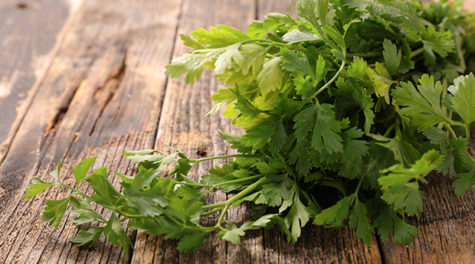
The most popular culinary herb is probably parsley. The Romany folk used it for many cures. Parsley is best when fresh and green, and goes with almost any dish, adding not only flavor but also helping to keep the system clear and disease at bay. Incidentally, a sprig dipped in vinegar and chewed will sweeten the sourest of breath.
Have parsley at hand at all times and use it as a garnish in stews, soups, and sauces. Sprinkle it on cooked mushrooms, tomatoes, potatoes, artichokes, and add it to a vinaigrette sauce, french dressing, and creamed cheese dishes. Use parsley stuffing for chicken to give fragrance to the flesh.
Here are some authentic Romany recipes that use parsley:
More About Parsley:
Common Names: Parsley, Persil, Devil’s Oatmeal, Perceley
Latin Name: Petroselinum crispum
Parts Used: Leaves, stems, roots, and seeds
Cultivation: Parsley is a hardy biennial. It doesn’t transplant well, so sow the seeds where you wish it to grow. Cut the flowers off as they appear the second year or you will have all flower and no leaves.
Cosmetic Uses: Add parsley infusions to your bathwater to soothe and cleanse.
Culinary Uses: Everyone is familiar with the soggy piece of curly parsley that appears on your plate in restaurants. Curly parsley is used most often as a garnish as it has a relatively mild flavor. Flat or Italian parsley is used frequently in cooking and has a strong flavor that mixes well with just about any dish. Use it fresh (dried has NO flavor), and add to foods towards the end of cooking.
Magickal Uses: Parsley promotes fertility and encourages lust. Use it in purification baths. Sprigs of parsley were once used on plates to keep food from becoming contaminated.
Medicinal Uses: Parsley has more vitamin C, proportionally, than an orange. Take infusions of parsley for bladder infections. It is also rich in other vitamins, like A, several B’s, and contains good quantities of calcium and iron. Parsley increases milk production and tones uterine muscles. The chlorophyll acts as a natural breath freshener.
Cautions: Large quantities can cause decreased blood pressure and pulse. It can also irritate the kidneys if overused.
Body Cleansing Tea
This tea is for clear skin, to promote the immune system, and the help remove toxins from the bloodstream.
- 3 tsp chopped young nettle leaves
- 1 tsp parsley
- ½ tsp lavender flowers
- juice of ½ a lemon
Note:
This blend is for one person and is intended to have half a pint of boiling water poured over it. Allow the infusion to stand for 10 minutes before straining and do not stir, as this bruises the plants. Obviously, you can adjust the amount of water or standing time to your own taste. If you prefer your tea sweet, add a little honey, not sugar, to the strained infusion.
Source: Tami Brown
Gypsy Cure for Indigestion
Gypsy Cures for Rheumatism
Anyeta claimed to cure many people of rheumatism. She always said that if celery was cooked in milk and eaten with the milk it would neutralize uric acid, lactic acid and other excess acids in the body. Cleansing muscular tissues and so curing rheumatism. She brought this cure with her when she came over to England from Romania.
Certainly celery is a soldier in the fight against rheumatism, it contains many nourishing salts and a great deal of organic sulfur. Sometimes people find they cannot take it, but these are few and far between. Stewed celery was a frequent dish on the Romany table, and the seeds have an even greater therapeutic action than the plant itself. Place a teaspoonful of the seeds in a cup of boiling water. Allow to infuse and drink a cupful of this two or three times a day- it can be sweetened with a little honey.
Horseradish is also good for rheumatism, whether taken internally or externally. For external use, grate a little on a plate, cover with boiling milk and apply to the affected part while still warm. You can also try an embrocation made of bladderwrack which you can obtain from a good herbalist.
One of the best gypsy remedies for rheumatism is made with dandelion root. You boil 1 oz of the root in one and a half pints of water for 20 minutes. Strain and take a wineglassful twice daily. Another simple remedy is to paint peppermint oil on the affected part.
Wayside Herbs
Much of the gypsy`s strength and health came from the abundance of wayside plants which they understood and knew how to use to keep them healthy. Many of these wayside herbs are recognized by herbalists and can be obtained from them in a dried form. Others are so readily available that they grow unasked in any garden and are angrily rooted up and thrown away even destroyed by weedkiller in ignorance of the goodness that is so carelessly discarded.
The children of the gypsies were often sent out to gather sack loads of herbs, particularly dandelions and stinging nettles. These were sent to chemists and herbalists to be made up into remedies. It makes you wonder if farmers as they plow through their fields realize how much value they are destroying as they plow in all the herbs and `weeds`. To cultivate and sell them for use in medicine might well pay more than selling cabbages!
Where there is much damp and water, there grows the willow, with its bark to cure aches and pains. The names of many herbs and roots point to the complaints they can cure- for instance, chestnut leaves for chest complaints, gravel root for stone and gravel in the kidneys, Liver Wort for the liver, Lung Wort for the lungs and Hearts Ease for weak hearts.
Where there is a nettle to sting you,always close at hand you will find a dock leaf to rub on the sting and reduce the pain. But besides this practical use of the leaf, the Romanies also know that the seeds of the dock form part of a charm against pain. They should be gathered when fully ripe, placed in a little muslin bag and tied round a patients left arm. This old gypsy charm will cure many pains and it is particularly useful to any woman or girl who suffers pain with her periods.
The gypsies often wore herbs- for instance, balm,which gives out a wonderful lemony scent when the leaf is picked and rubbed between the fingers. The Romanies believed that wearing the leaves and roots in a sachet next to the heart made one beautiful, healthy and happy. Bees love it and for this reason it is often called Bee Balm. If you grow it in your garden you will know how swiftly it spreads. The best time to harvest it is in July in the early morning.
Burdock grows wild on waste ground, in hedges and by the wayside. Its leaves are large and heart- shaped and its purple flowers bloom in July and August. It is said that wearing burdock seeds in a muslin bad, around your neck, keeps rheumatism at bay.

